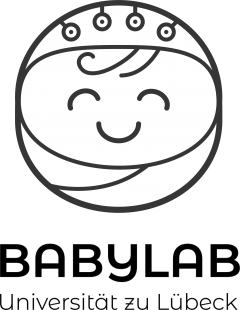| In a new study in adult participants conducted by our collaborators in Maastricht, we investigated the role of early visual cortices for the processing of facial trustworthiness. To that end, processing in early visual cortices in adults was interrupted using so-called trans-cranial magnetic stimulation (TMS). Even when TMS was applied, participants showed comparable behavioural judgements of trustworthiness, suggesting that at least some aspects of facial trustworthiness can be processed without having to rely on early visual areas. Further information can be found here Janssens, S.E.W., Sack, A.T., Jessen, S., & de Graaf, T. (2020). Can processing of face trustworthiness bypass early visual cortex? A transcranial magnetic stimulation study. Neuropsychologia, 137. |
Year: 2019
How does a mother’s scent impact emotion perception in babies?
Finally – we have the first results from our odor study. We invited 91 babies (and their moms) from Lübeck and the surrounding area to the lab to test how the mother’s familiar scent would impact the babies’ response to emotional, in particular fearful, faces. 7-month-olds typically show an enhanced EEG response to fearful faces, and we wanted to see how this might change if the baby smells their mother, a different mother, or no particular smell. Interestingly, the babies who smelled a different mother or no particular scent showed the expected fear response, while this response was absent in the babies who could smell their mother. Hence, maternal odor seems to result in a reduction in the fear response of 7-month-old infants.
Check here for further information: https://www.biorxiv.org/content/10.1101/827626v1
How do babies’ brains respond to dynamic audiovisual stimuli?
Our first study from Lübeck! And it’s a more methods-oriented project. Most EEG studies in infants rely on the analysis of so-called event-related brain potentials (ERPs), meaning that we need to show the babies a large number of very similar pictures (or sounds) in order to be able to then compute mean brain response to these pictures (or sounds). For the babys, this is often just as boring as it sounds. Also, it’s quite different from real life, where we rarely see the same piece of information over and over again. In this project, we therefore borrowed an analysis approach from adult research to try something different. We invited babys to the lab and had them watch one episode of “Peppa Pig”, while we recorded their EEG-signal. Afterwards, we used so-called encoding models to compute the relationship between the ongoing EEG-signal and a number of video parameters, in particular the audio and the (visual) motion content. For both of these parameters, we could obtain very robust and clear-cut responses. In the future, such approaches might be used to design more naturalistic and fun experiments for our participants.
Jessen, S., Fiedler, L., Münte, T.F., & Obleser, J. (in press). Quantifying the individual auditory and visual brain response in 7-month-old infants watching a brief cartoon movie. NeuroImage.
Does facial trustworhiness impact object processing in infancy?
In prior studies, we could show that infants process faces perceived by adults as particularly trustworthy different from those that were judged by adults as less trustworthy. In our new study, we investigated whether infants make use of this trustworthiness information and process objects differently, depending on whether a face looking at that object looks trustworthy. This seems to be the case; both trustworthiness and direction of gaze influence how an infant processes a new object.
Jessen, S. & Grossmann, T. (2019). Neural evidence for the impact of facial trustworthiness on object processing in a gaze-cueing task in 7-month-old infants, Social Neuroscience.
https://www.tandfonline.com/doi/abs/10.1080/17470919.2019.1651764?journalCode=psns20
Cognitive Control, Motivation, and the IFJ
Nothing related to infants or social development, for a change. Bernadette’s new paper on the role of the IFJ (inferior frontal junction) for the interplay between cognitive control and motivation is out! So, in the manuscript she is investigating, how this brain region, the IFJ, might be involved in the observation that we are better at switching between two tasks when we get more money for doing the tasks correct. To find out more, have a look here:
Hippmann, B., Kuhlemann, I., Bäumer, T., Bahlmann, J., Münte, T.F., & Jessen, S. (in press). Boosting the effect of reward on cognitive control using TMS over the left IFJ. Neuropsychologia, 125, 109-115.
